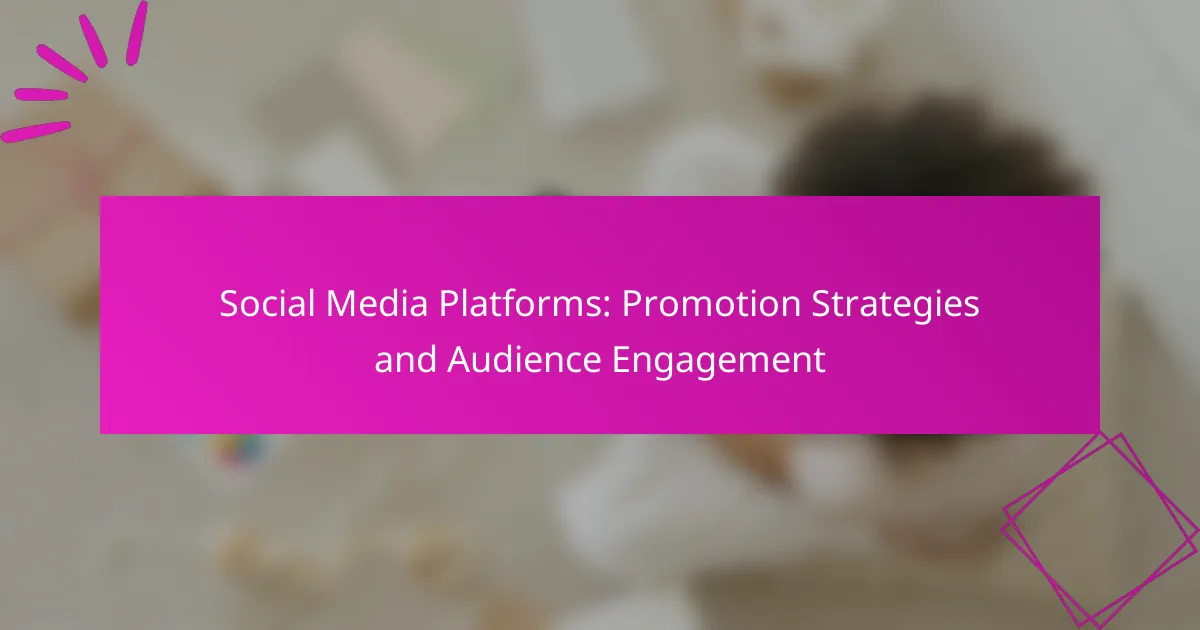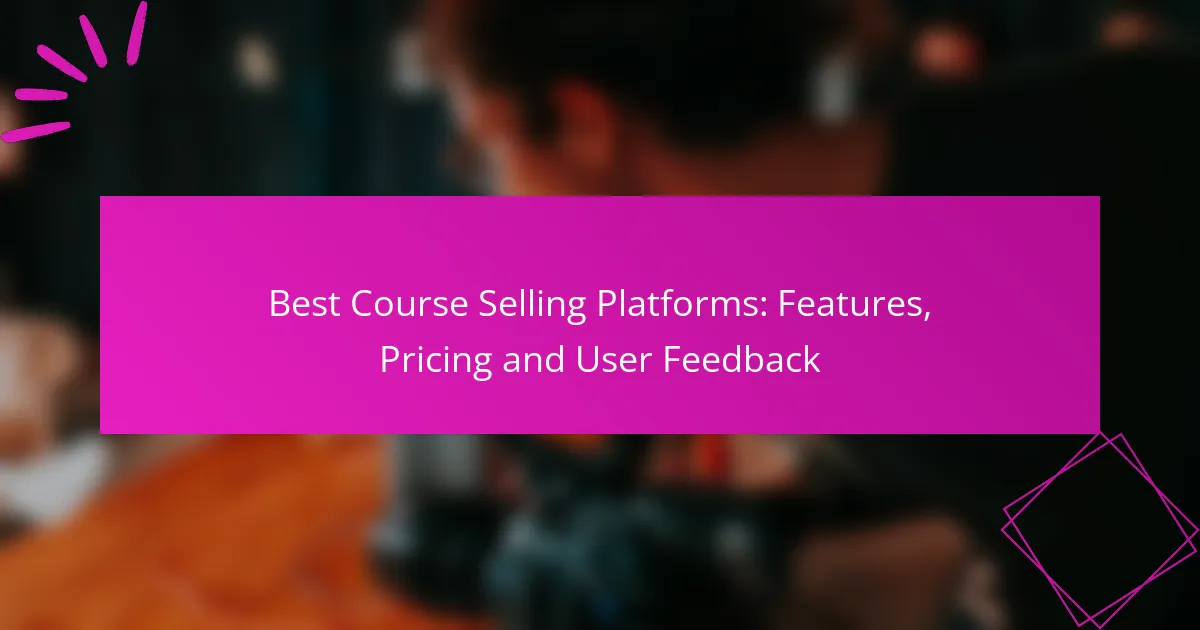In today’s digital landscape, effective social media promotion strategies are essential for businesses aiming to enhance visibility and engage with their audience. By creating engaging content, utilizing targeted advertising, and leveraging influencer partnerships, brands can foster meaningful connections with their local audience. Furthermore, interactive content and direct communication strategies, such as polls and live sessions, play a crucial role in building community and loyalty among followers.

What are effective social media promotion strategies in Canada?
Effective social media promotion strategies in Canada focus on engaging content, targeted advertising, and leveraging influencer partnerships. By understanding the local audience and utilizing the right platforms, businesses can enhance their visibility and foster meaningful connections.
Content marketing on Instagram
Content marketing on Instagram involves creating visually appealing posts that resonate with Canadian audiences. Utilize high-quality images, videos, and stories to showcase products or services while reflecting local culture and interests.
Consider using Instagram’s shopping features to facilitate direct purchases. Engaging captions and relevant hashtags can help increase reach and interaction, making it easier for potential customers to discover your brand.
Influencer partnerships on TikTok
Influencer partnerships on TikTok can significantly boost brand awareness among younger demographics in Canada. Collaborating with local influencers who align with your brand values can create authentic content that resonates with their followers.
Choose influencers based on their engagement rates rather than just follower counts. Short, creative videos that highlight your product in a fun way can lead to higher conversion rates and foster a sense of community around your brand.
Facebook ad targeting for local businesses
Facebook ad targeting is crucial for local businesses in Canada looking to reach specific demographics. Utilize Facebook’s robust targeting options to focus on geographic locations, interests, and behaviors relevant to your audience.
Consider running promotions or events that encourage local engagement. A/B testing different ad formats and messages can help identify what resonates best with your target market, optimizing your advertising spend.
LinkedIn networking for B2B engagement
LinkedIn networking is essential for B2B engagement in Canada, allowing businesses to connect with industry professionals and decision-makers. Regularly share valuable content, such as articles or case studies, to establish your expertise and attract connections.
Participate in relevant groups and discussions to enhance visibility. Personalized connection requests and follow-ups can lead to meaningful relationships that may result in partnerships or client opportunities.

How can brands engage their audience on social media?
Brands can engage their audience on social media by utilizing interactive content and fostering direct communication. Strategies such as polls, live sessions, and user-generated content not only enhance interaction but also build community and loyalty.
Interactive polls and quizzes on Instagram Stories
Interactive polls and quizzes on Instagram Stories are effective tools for brands to engage their audience. These features allow users to participate in real-time, providing instant feedback and insights into their preferences.
To implement this strategy, brands can create engaging questions related to their products or industry. For example, a clothing brand might ask followers to vote on their favorite outfit styles. This not only boosts engagement but also informs future marketing decisions.
Live Q&A sessions on Facebook
Live Q&A sessions on Facebook enable brands to connect directly with their audience, answering questions and addressing concerns in real-time. This format fosters a sense of community and transparency, making followers feel valued and heard.
Brands should promote these sessions in advance to maximize participation. During the session, it’s crucial to keep responses concise and relevant, ensuring that the audience remains engaged throughout the discussion.
User-generated content campaigns
User-generated content campaigns encourage followers to create and share content related to a brand, enhancing authenticity and community involvement. This strategy not only showcases customer loyalty but also provides brands with fresh content to share.
To launch a successful campaign, brands can create specific hashtags and offer incentives, such as contests or features on their official pages. For instance, a travel brand might encourage users to share their travel photos using a designated hashtag, creating a vibrant gallery of experiences that promotes the brand organically.

What metrics should be tracked for social media success?
To measure social media success, focus on key metrics such as engagement rates, follower growth, and conversion rates from ads. Tracking these metrics helps assess the effectiveness of your promotional strategies and audience engagement efforts.
Engagement rates on posts
Engagement rates indicate how actively your audience interacts with your content. This includes likes, comments, shares, and saves. A higher engagement rate typically suggests that your content resonates well with your audience.
To calculate engagement rates, divide the total interactions by the number of followers or impressions, then multiply by 100 to get a percentage. Aim for engagement rates between 1% to 5% as a general benchmark, but this can vary by industry.
Follower growth over time
Follower growth measures how your audience expands on social media platforms. Tracking this metric helps you understand the effectiveness of your content and promotional strategies in attracting new followers.
Monitor follower growth monthly to identify trends. A consistent increase indicates successful outreach, while stagnation or decline may require reevaluation of your content strategy. Aim for a steady growth rate of 5% to 10% per month, depending on your niche.
Conversion rates from social media ads
Conversion rates from social media ads reflect the percentage of users who take a desired action after interacting with your advertisement, such as making a purchase or signing up for a newsletter. This metric is crucial for assessing the ROI of your advertising efforts.
To calculate conversion rates, divide the number of conversions by the total number of ad clicks, then multiply by 100. A conversion rate of 2% to 5% is often seen as effective, but this can vary based on the industry and target audience.

What are the prerequisites for a successful social media strategy?
A successful social media strategy requires a clear understanding of your target audience and well-defined marketing objectives. These elements guide content creation, engagement tactics, and overall campaign effectiveness.
Understanding target audience demographics
Identifying your target audience’s demographics is crucial for tailoring your social media strategy. Key factors include age, gender, location, interests, and online behavior. For instance, younger audiences may prefer platforms like TikTok, while older demographics might engage more on Facebook.
Utilize analytics tools to gather insights about your audience. This data helps in creating relevant content that resonates with your followers, increasing engagement and loyalty. Regularly revisiting and updating your audience profile ensures your strategy remains aligned with changing trends.
Setting clear marketing objectives
Establishing clear marketing objectives is essential for measuring the success of your social media efforts. Objectives should be specific, measurable, achievable, relevant, and time-bound (SMART). For example, aiming to increase brand awareness by 20% within six months can provide a clear target.
Consider different types of objectives such as increasing website traffic, generating leads, or enhancing customer engagement. Regularly assess your progress against these goals to adjust your strategy as needed. Avoid vague goals; specificity helps in tracking performance and making informed decisions.

How do different social media platforms compare for promotions?
Different social media platforms offer unique advantages for promotions, depending on the target audience and type of product. Understanding these differences can help businesses tailor their marketing strategies effectively.
Instagram vs. Facebook for visual products
Instagram is ideal for promoting visual products due to its image-centric design and younger demographic. Brands can leverage high-quality images and engaging stories to capture attention, often leading to higher engagement rates compared to Facebook.
Facebook, while still effective, caters to a broader audience and supports various content types, including text and video. For visual products, using Facebook’s targeted ads can enhance visibility, especially among older demographics.
Consider using Instagram for direct engagement through stories and posts, while utilizing Facebook for detailed product descriptions and customer interactions. A balanced approach can maximize reach across both platforms.
Twitter vs. LinkedIn for professional networking
Twitter excels in real-time engagement and is effective for quick updates, making it suitable for brands looking to connect with a broad audience swiftly. Its trending topics can amplify promotional messages, especially during events or launches.
LinkedIn, on the other hand, is tailored for B2B interactions and professional networking. It allows for in-depth content sharing, such as articles and case studies, which can establish authority and foster connections within specific industries.
For effective networking, use Twitter for fast-paced conversations and brand awareness, while leveraging LinkedIn for building professional relationships and sharing expertise. Each platform serves distinct purposes that can complement a comprehensive marketing strategy.

What are the emerging trends in social media marketing?
Emerging trends in social media marketing include the rise of short-form video content, a growing emphasis on social commerce, and the use of AI for content personalization. These trends reflect changing consumer behaviors and technological advancements that marketers must adapt to for effective audience engagement.
Short-form video content popularity
Short-form video content has gained immense popularity across platforms like TikTok, Instagram Reels, and YouTube Shorts. These bite-sized videos cater to users’ decreasing attention spans, making them an effective tool for brands to capture interest quickly.
To leverage this trend, brands should focus on creating engaging, authentic content that resonates with their target audience. Aim for videos that are 15 to 60 seconds long, as this duration is optimal for viewer retention and sharing.
Increased focus on social commerce
Social commerce is becoming a key component of social media marketing, allowing brands to sell products directly through platforms like Facebook, Instagram, and Pinterest. This trend simplifies the shopping experience by integrating product discovery and purchasing in one seamless process.
To capitalize on social commerce, businesses should optimize their social media profiles for shopping, utilize shoppable posts, and engage with customers through live shopping events. This approach can lead to higher conversion rates and increased customer loyalty.
AI-driven content personalization
AI-driven content personalization is revolutionizing how brands interact with their audiences on social media. By analyzing user data, AI can help tailor content to individual preferences, enhancing engagement and satisfaction.
Marketers should invest in AI tools that analyze user behavior and preferences to create targeted campaigns. Personalization can range from customized product recommendations to tailored messaging, making users feel valued and understood.

How can brands adapt to changing social media algorithms?
Brands can adapt to changing social media algorithms by focusing on high-quality content, engaging with their audience, and staying updated on platform changes. Understanding how algorithms prioritize content can help brands maintain visibility and reach their target audience effectively.
Focus on Quality Content
High-quality content is crucial for brands to thrive under evolving algorithms. This means creating visually appealing, informative, and relevant posts that resonate with the audience. Brands should prioritize originality and authenticity to foster genuine connections.
Using a mix of formats, such as videos, infographics, and live streams, can enhance engagement. For instance, brands might find that short videos perform better than static images, leading to higher interaction rates.
Engage with Your Audience
Active engagement with the audience is essential for adapting to social media algorithms. Responding to comments, asking questions, and encouraging user-generated content can boost visibility. Brands should aim to create a community around their content.
Regularly hosting Q&A sessions or polls can keep the audience involved and provide valuable insights into their preferences. This interaction signals to algorithms that the content is relevant and worth promoting.
Stay Updated on Platform Changes
Social media platforms frequently update their algorithms, which can impact how content is distributed. Brands must stay informed about these changes to adjust their strategies accordingly. Following industry news and participating in relevant webinars can help brands remain agile.
Utilizing analytics tools to track performance can also provide insights into how algorithm changes affect engagement. Brands should be prepared to pivot their strategies based on these insights to maintain their reach and effectiveness.



